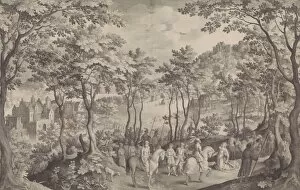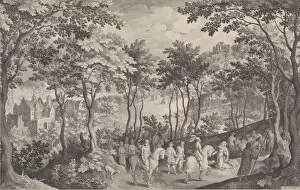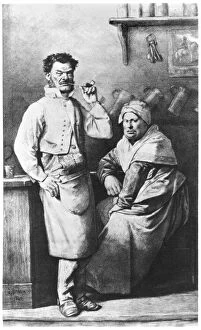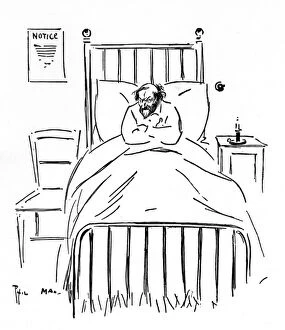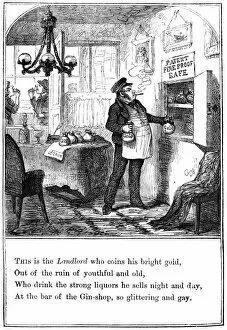Miserly Collection (#2)
"The Scotsman who had his money's worth: A tale of a miserly man and his frugal ways
For sale as Licensed Images
Choose your image, Select your licence and Download the media
"The Scotsman who had his money's worth: A tale of a miserly man and his frugal ways. " Step into the world of Eugenio Lucas Velazquez's allegoric Capricho, 1852, where a miserly old man is depicted surrounded by his precious wealth. In a Victorian satirical cartoon titled "The Miser and the Dandy, " we witness the clash between extravagance and stinginess, as these two characters embody contrasting lifestyles. Costume preparatoire for Alexandre Pouchkine's play "Le chevalier avare" showcases the character of Baron Avare, highlighting the theme of greed in this theatrical masterpiece. Nikolai Vasilyevich Nevrev's painting "Les comptes familiaux (The Family Accounts)" takes us back to 19th-century Russia, shedding light on how financial matters were managed within households. The portrayal of meticulous bookkeeping reflects an air of miserliness. Charles Dickens' iconic novel "A Christmas Carol" introduces us to Ebenezer Scrooge, whose disdain for charity and generosity towards the poor epitomizes extreme miserliness. This illustration captures Scrooge regarding the poor with indifference during Christmas time. "The Money Changers, " an oil painting depicting individuals engaged in financial transactions, reminds us that even in ancient times, there were those driven solely by monetary gain - their actions reflecting avarice rather than compassion or empathy. Boris Michaylovich Kustodiev's painting "Le marchand" portrays an elderly man clutching both money and an abacus. This image symbolizes not only wealth but also hints at a certain level of stinginess associated with counting every penny meticulously. Quentin Metsys' artwork titled "Les collecteurs d'impot (The Tax Collectors)" transports us to 16th-century Flanders. Here we see tax collectors interacting with citizens who are reluctant to part with their hard-earned money, showcasing the theme of miserliness in society.

